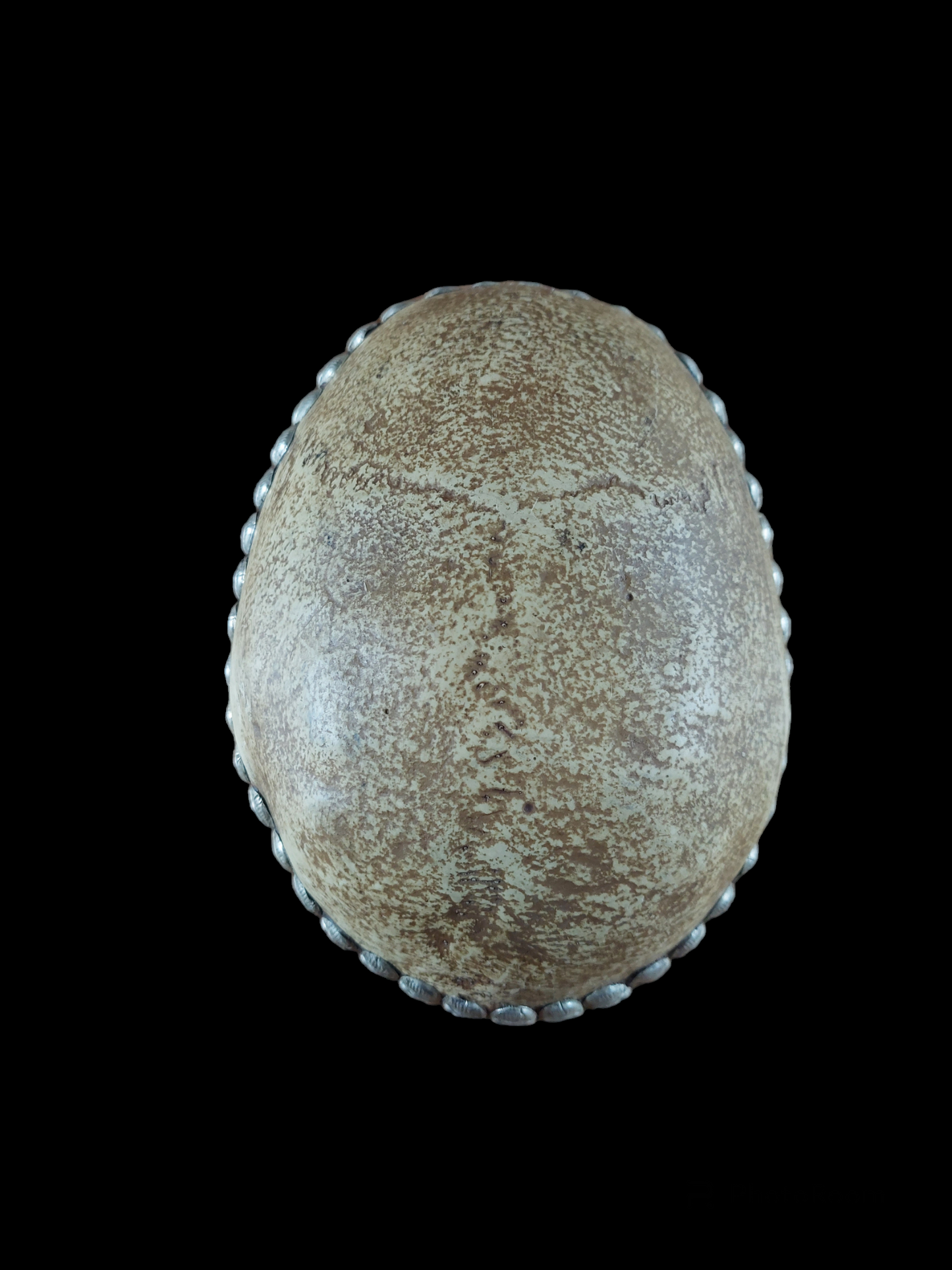Seawolf Shop
Kapala with silver interior
Kapala with silver interior
Couldn't load pickup availability
Share
Kapala's can be found in the ritual practices of Hinduism and tantric Buddhism. The word kapala comes from Sanskrit language and means 'skull'. In former days, these ritual bowls were often made from human skulls.
This usage of human skull caps derived from early Indian Shaivite ascetics called Kapalika. 'Kapalika' translates as 'skull-men' or 'skull-bearers', referring to the fact that these men (originally penitents, who got sentenced to twelve years of penence after killing a Brahmin) traditionally carried a skull-topped trident and a human skull cap as begging bowl.
Early tantric Buddhists adopted the attributes of these Kapalika into their spiritual practices and thus the kapala became more and more of a ceremonial or ritual attribute, and along the way the original Kapalika symbolism got mixed more and more with Buddhist symbolism.
Kapala's are used for multiple esoteric purposes and ritual practices in Hinduism and Tibetan (tantric) Buddhism. For example they are often used as offering bowls to hold offerings for wrathful deities; in Tibetan buddhism for example 'torma' (sculptures from bread or dough cakes) and wine are often used, representing (human) flesh and blood.
Kapala's are also a symbol of wisdom and knowledge and the transmission of knowledge from the tantric guru to his student by touching the top of the student's head. Because of this symbolism, they are used in higher tantric meditational practices to achieve a transcendental state of mind, break through the illusions of the human mind and reach enlightenment.
Associated with the spiritual practices in which kapala's are used, are often the wrathful forms of tantric deities such as Kali, Durga and Shiva. On many depictions they can be seen holding a kapala in their hands or drinking blood from them. By association the depiction of these deities is often used as decoration on kapala's.
Nowadays kapala's are mostly made from materials such as resin, metal or (gem)stone, but still always shaped like a human skull cap. This kapala here in our shop is made from resin. It is beautiful in its simple, yet very elegant appearance. The inside of this kapala is lined with a white metal alloy, containing a low content of Tibetan silver. It has an almost pearly white appearance and feels very smooth to the touch. Around the edge it is decorated with a row of skulls in this same silver-metal alloy.
Size is approximately 17 centimeters long and 12 centimeters wide. It weighs 394 grams. When using it as an offering bowl on your altar, it is best to place it on a special tripod pedestal.
Only one available.









